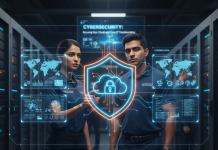India’s mining sector has historically grappled with inherent vulnerabilities—from natural disasters like landslides and floods to man-made accidents such as gas explosions, tunnel collapses, and equipment malfunctions.
As operations expand and go deeper underground or into geologically complex regions, the risk landscape becomes more unpredictable. It is no longer sufficient to respond to disasters. The imperative now is to anticipate, prepare, and build resilience.
Mining resilience isn’t just about protocols and safety drills—it’s about institutional preparedness, real-time decision-making, worker training, and technological support. And it’s this broader, more integrated view that’s gaining momentum across Indian mines—guided by bodies like FIMI and the CII Mining & Metals Committee.
The Past as a Warning: Why Preparedness Matters
India has seen its share of mining tragedies. The Chasnala coal mine disaster (1975), the Neyveli lignite explosion (2020), and numerous roof collapse incidents have underscored systemic gaps in crisis planning, early detection, and response coordination.
In many cases, response efforts were reactive and fragmented, worsened by communication failures and lack of on-ground training.
These incidents were painful reminders that crisis management cannot be treated as a secondary concern—it must be a core operational pillar.
Risk Identification: The Foundation of Any Response Plan
Disaster preparedness starts with understanding what could go wrong. Risks in mining are diverse—ranging from seismic activity, equipment failure, and gas leaks, to fire outbreaks, water ingress, and human error.
Advanced technologies such as remote sensing, geospatial mapping, and real-time environmental monitoring systems now allow mine operators to identify high-risk zones, model potential emergencies, and simulate response strategies.
Several Indian mining companies have started using digital mine maps integrated with AI-powered alert systems, which flag anomalies in structural integrity or gas levels and trigger automatic response sequences.
Training and Simulation: Preparing the Workforce
Even the best technology fails without human preparedness. One of the most important aspects of crisis management is training frontline workers, many of whom operate in isolated conditions with limited supervisory oversight.
FIMI, in collaboration with the Directorate General of Mines Safety (DGMS), has championed on-site mock drills, e-learning modules, and multi-language safety education programs. These initiatives ensure that every worker knows how to react—not just when an alarm goes off, but when signs of trouble are subtle or ambiguous.
Moreover, CII is helping companies standardize crisis response SOPs and encouraging the development of company-wide crisis management cells equipped to handle logistics, media relations, and stakeholder communication during emergencies.
Tech-Driven Crisis Response: From Drones to Smart Helmets
Emerging tools are playing a crucial role in accelerating emergency responses. For example:
- Drones can assess hazardous zones post-collapse, providing aerial intel without risking lives.
- Smart helmets embedded with sensors track workers’ location and health vitals. If someone collapses or is exposed to toxic gases, alerts are sent instantly.
- Mine-wide alert systems use IoT and AI to manage evacuation protocols, seal danger zones, and shut down power in critical areas.
These are not experimental. Pilot projects using these technologies are already being run by major mining firms in Jharkhand, Odisha, and Chhattisgarh.
The Role of Policy and Industry Leadership
While companies are implementing tools on the ground, institutional frameworks are essential to scale disaster resilience across the sector. FIMI is working closely with government bodies to develop industry-wide risk standards, support real-time compliance reporting, and advocate for dedicated disaster funds and insurance models for miners.
CII, on the other hand, emphasizes collaborative knowledge sharing. Through its annual safety summits, it facilitates cross-company discussions where firms share their disaster response learnings and technologies, fostering a community-wide safety culture.
Conclusion: Resilience Is Not Optional—It’s the Future
In mining, every second matters—and preparedness can be the difference between minor disruption and major disaster. As India seeks to expand its mineral footprint to meet future energy and infrastructure goals, building a resilient mining ecosystem must be a national priority.
Resilience is no longer just about minimizing damage. It’s about empowering workers, embracing predictive technology, and embedding safety into strategy. Thanks to the combined efforts of FIMI, CII, and forward-looking mining firms, India is beginning to redefine what preparedness looks like—from the shafts of its deepest mines to the planning tables of its largest companies.












